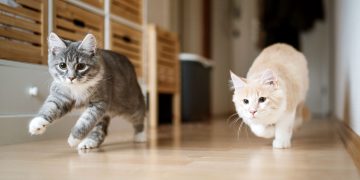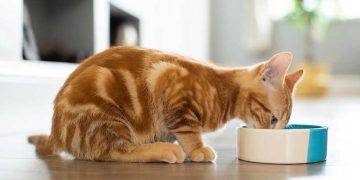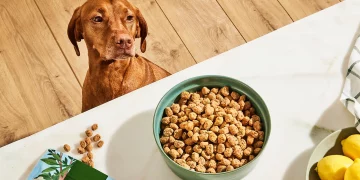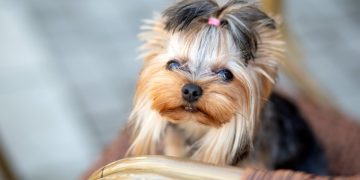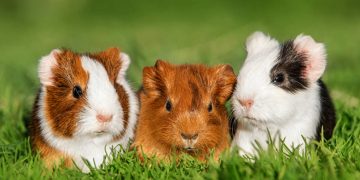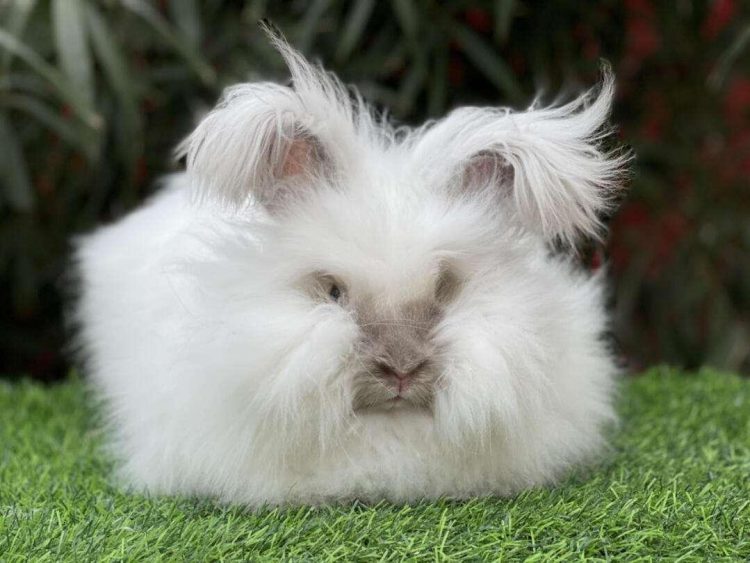Angora rabbits are unique in many ways, most notably for their long, soft, and luxurious coats. However, keeping an Angora rabbit healthy and happy requires more than just proper grooming; a balanced diet is crucial to ensuring they thrive. The food you provide for your Angora rabbit directly impacts their coat quality, digestive health, and overall well-being. This detailed guide covers everything you need to know about feeding your Angora rabbit, including their nutritional needs, feeding routines, and how to avoid common feeding mistakes.
1. Introduction: The Importance of a Balanced Diet for Angora Rabbits
1.1. Why Diet is Key to an Angora Rabbit’s Health
Like all rabbits, Angora rabbits are herbivores with sensitive digestive systems that rely on a balanced diet to stay healthy. Due to their long fur, Angora rabbits have specific dietary needs that go beyond regular rabbit food. An improper diet can lead to a variety of health problems, from gastrointestinal issues to poor coat condition.
A well-rounded diet plays a critical role in:
- Maintaining healthy fur
- Supporting proper digestion and preventing gastrointestinal stasis
- Promoting general health and preventing diseases
In addition, a good diet can help reduce the likelihood of obesity, which is common in house rabbits, especially those who don’t get enough exercise.
2. Understanding the Nutritional Needs of Angora Rabbits
2.1. Macronutrients: Fiber, Protein, and Fat
Rabbits have unique dietary requirements, especially when it comes to fiber. Their digestive systems are adapted to process high-fiber foods, and fiber is essential for keeping their digestive system moving properly.
- Fiber: Fiber is the most important component of an Angora rabbit’s diet. It helps regulate their digestion, prevents hairballs, and keeps their teeth healthy. High-fiber foods like hay should make up about 80% of an Angora rabbit’s daily intake.
- Ideal Fiber Content: Aim for 20-25% fiber in your rabbit’s diet, primarily from hay.
- Protein: While rabbits do need protein for growth and maintenance, they require only small amounts. Too much protein can cause kidney damage or other issues.
- Ideal Protein Content: Aim for 10-12% protein in their daily intake. Protein should come from hay, vegetables, and a limited amount of high-quality pellets.
- Fat: Fat provides energy but should be limited in a rabbit’s diet to avoid obesity.
- Ideal Fat Content: A well-balanced diet should have no more than 2-3% fat.
2.2. Micronutrients: Vitamins and Minerals
Just like fiber, vitamins and minerals are essential for maintaining overall health. Angora rabbits need a balance of vitamins (such as Vitamin A, D, and E) and minerals (like calcium, phosphorus, and magnesium) to support their immune system, skin health, and bone structure.
- Calcium: While calcium is vital for bone health, too much calcium can lead to kidney stones and urinary problems. Rabbits that are not pregnant or nursing do not require excessive calcium in their diet.
- Ideal Calcium Intake: 0.5% to 1% of their daily intake.
- Vitamin A: This vitamin is important for eye health, immune function, and skin health, including maintaining their beautiful fur.
- Ideal Vitamin A Intake: Vitamin A is typically found in dark leafy greens like kale and dandelion greens.
3. Essential Foods for Feeding Angora Rabbits
3.1. Hay: The Foundation of an Angora Rabbit’s Diet
Hay should make up about 80-85% of an Angora rabbit’s diet. It’s the most crucial component because it’s rich in fiber, which is vital for healthy digestion and fur quality.
- Types of Hay: There are several types of hay to choose from, and it’s essential to provide a variety to keep your rabbit satisfied and healthy.
- Timothy Hay: The most common hay for adult rabbits. It is high in fiber and low in protein and calcium, making it an ideal choice for daily feeding.
- Meadow Hay: A great alternative to Timothy Hay, offering a variety of grasses and nutrients that are beneficial to rabbits.
- Orchard Grass Hay: A softer hay that’s great for rabbits that are sensitive to the smell of stronger hays like Timothy.
- Alfalfa Hay: Alfalfa hay is rich in protein and calcium, but it’s only suitable for young, growing rabbits, pregnant or nursing females, or underweight rabbits. Adult Angora rabbits should avoid this hay because of its high calcium content.
Serving Hay: Always provide unlimited access to hay, as rabbits will graze throughout the day. Make sure the hay is fresh and free from mold.
3.2. Fresh Vegetables: Vital for Nutrients and Hydration
Fresh vegetables provide essential vitamins, minerals, and hydration. They also contribute to the variety in your Angora rabbit’s diet and are a great way to keep them mentally stimulated.
- Leafy Greens: These should be offered daily and should make up about 10-15% of your rabbit’s diet. Opt for nutrient-dense greens like:
- Romaine lettuce
- Kale
- Dandelion greens
- Mustard greens
- Parsley
- Other Vegetables: These can be offered in moderation:
- Carrots (small amounts due to their high sugar content)
- Bell peppers
- Celery
- Zucchini
- Cucumber
Note: Avoid feeding your Angora rabbit starchy vegetables like potatoes or onions, as they can be harmful to their digestive health.
3.3. High-Quality Rabbit Pellets
Pellets can be a convenient source of concentrated nutrients, but they should not make up the bulk of your rabbit’s diet. They should be fed in small amounts (1/4 to 1/2 cup per 6 pounds of body weight) and should only be high-quality, hay-based pellets.
- Choosing Pellets: Look for pellets that are high in fiber and low in protein and calcium. Avoid pellets with added sugars, seeds, or dried fruits, as they can lead to obesity and digestive problems.
- Feeding Pellets: Pellets should be given in a controlled amount, as overfeeding can lead to obesity. Always check the feeding guidelines on the packaging.
3.4. Fruits: A Treat in Moderation
Fruits should be given sparingly due to their high sugar content, but they can be a delightful and healthy treat for your Angora rabbit.
- Safe Fruits:
- Apples (without seeds)
- Blueberries
- Strawberries
- Pears
- Peaches
- Avoid Toxic Fruits: Never feed your rabbit grapes, raisins, or stone fruits like cherries, as these can be toxic to them.
Serving Fruits: Limit fruit intake to a small portion, roughly 1-2 tablespoons per day, as a treat.

4. Feeding Schedules and Portions for Angora Rabbits
4.1. How Much Should You Feed an Angora Rabbit?
The amount of food you feed your Angora rabbit depends on their age, weight, and activity level. Generally, adult rabbits should eat around:
- Hay: Unlimited access to hay (80-85% of their diet)
- Vegetables: About 1-2 cups of fresh vegetables per 5 pounds of body weight per day
- Pellets: 1/4 to 1/2 cup per 6 pounds of body weight per day
- Fruits: Limited to small servings, no more than 1-2 tablespoons per day
4.2. Feeding Frequency
- Hay: Always available throughout the day.
- Vegetables: Serve fresh vegetables once or twice per day.
- Pellets: Offer pellets once per day, preferably in the morning or evening.
- Treats: Limit fruits and treats to occasional servings, once or twice per week.
5. Common Feeding Mistakes and How to Avoid Them
5.1. Overfeeding Pellets
Pellets should be seen as a supplement, not the primary food source. Overfeeding pellets can lead to obesity and other health issues like liver disease. Always measure out the pellets to avoid free-feeding them.
5.2. Lack of Variety in Vegetables
Feeding a limited range of vegetables can result in nutrient imbalances. It’s essential to offer a variety of fresh greens and vegetables to provide a balanced array of vitamins and minerals.
5.3. Feeding Too Much Fruit
While fruit is healthy, its high sugar content can lead to obesity and digestive upset if fed in excess. Make sure to limit fruit to treat-sized portions.
5.4. Feeding Human Food
Many human foods are unsafe for rabbits and can cause digestive problems. Avoid feeding your Angora rabbit food like processed snacks, chocolate, or anything with high sugar or salt.
6. The Role of Diet in Grooming and Coat Quality
6.1. How Diet Affects Fur Quality
Since Angora rabbits have dense, long fur, their diet plays a significant role in the condition of their coat. The best way to ensure a shiny, healthy coat is by providing a balanced diet with high fiber, vitamins, and minerals.
- Fiber and Coat Health: Fiber is essential for preventing hairballs, which can lead to blockages and other gastrointestinal issues. A high-fiber diet helps prevent hair from accumulating in the digestive tract.
- Vitamin A for Shiny Fur: Vitamin A, found in dark leafy greens, contributes to the health of your rabbit’s fur, keeping it shiny and soft.
7. Conclusion: The Key to a Happy and Healthy Angora Rabbit
Feeding an Angora rabbit requires a balance of high-fiber hay, fresh vegetables, high-quality pellets, and occasional fruit treats. By providing the right food in the right amounts, you can ensure your rabbit stays healthy, has a beautiful coat, and enjoys a long life by your side. Be sure to consult your veterinarian for personalized feeding advice, especially if you notice any signs of digestive problems or changes in your rabbit’s eating habits.
With a proper feeding routine, your Angora rabbit will thrive in a healthy, happy environment!






